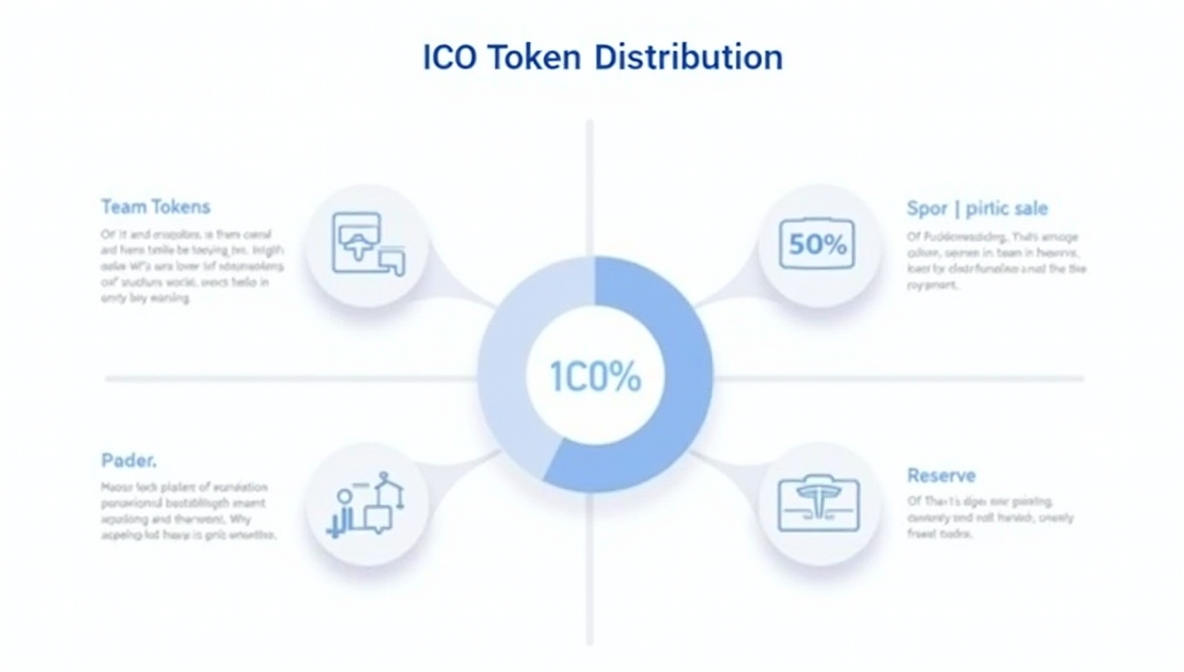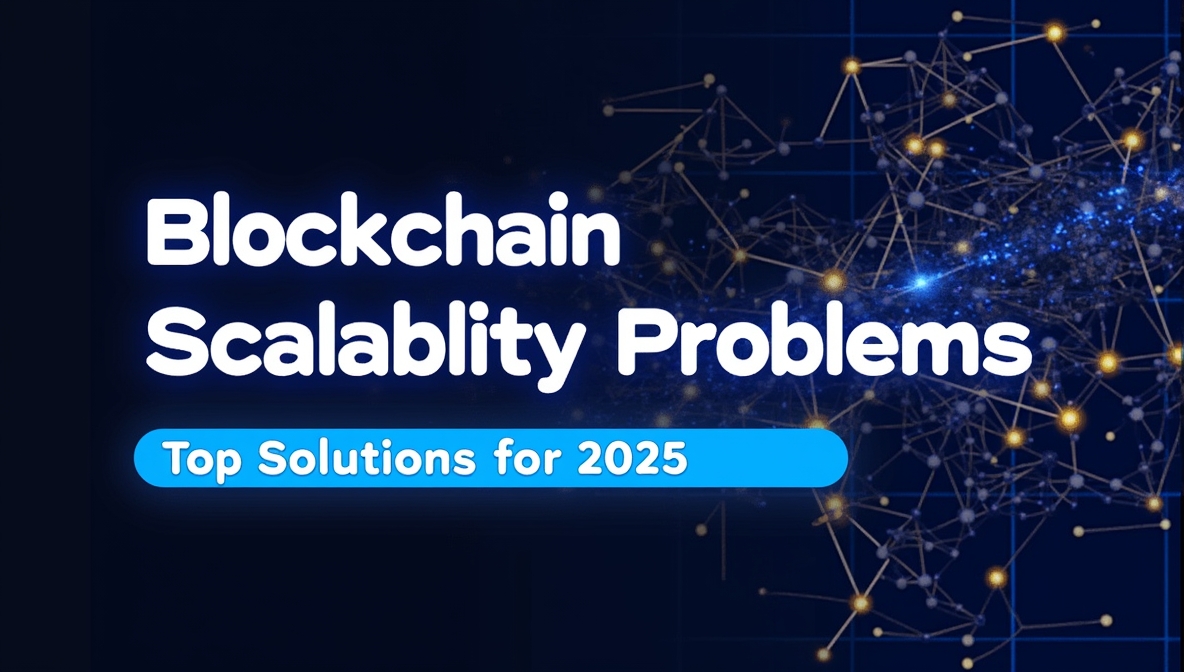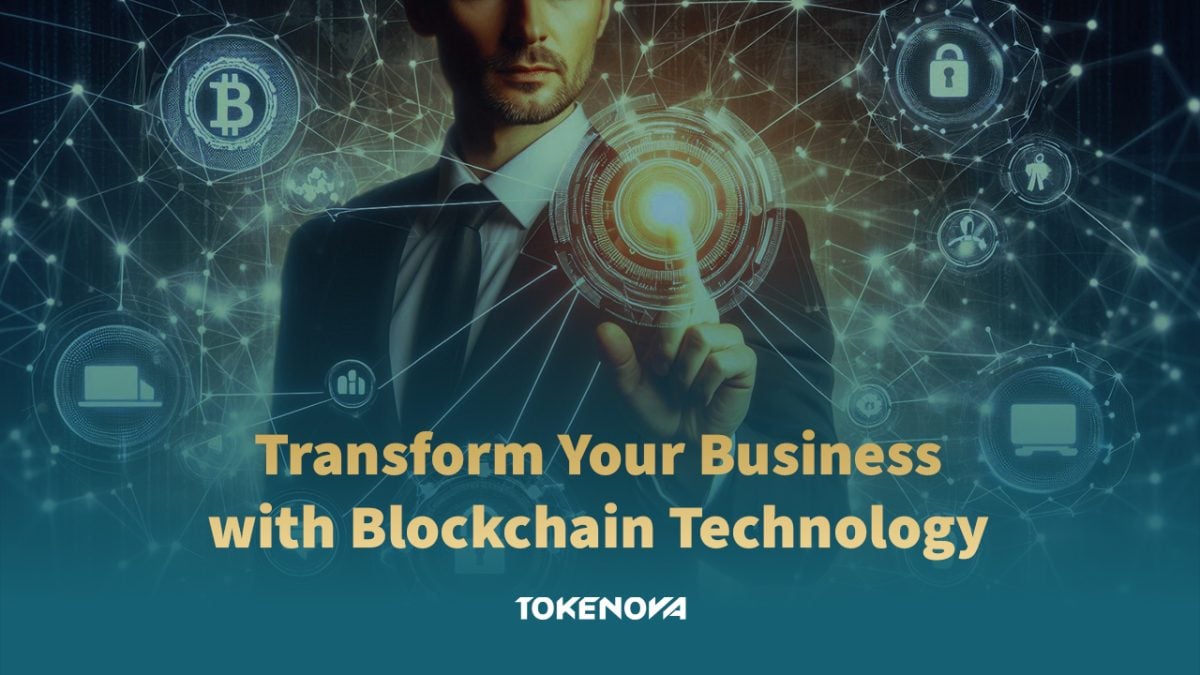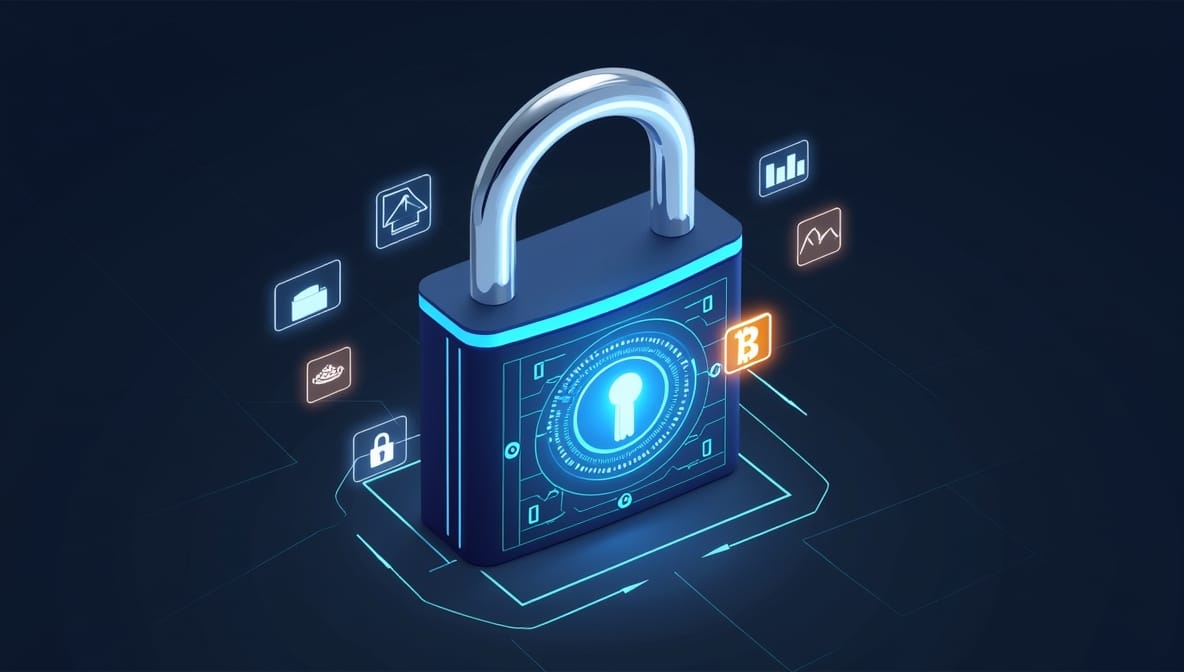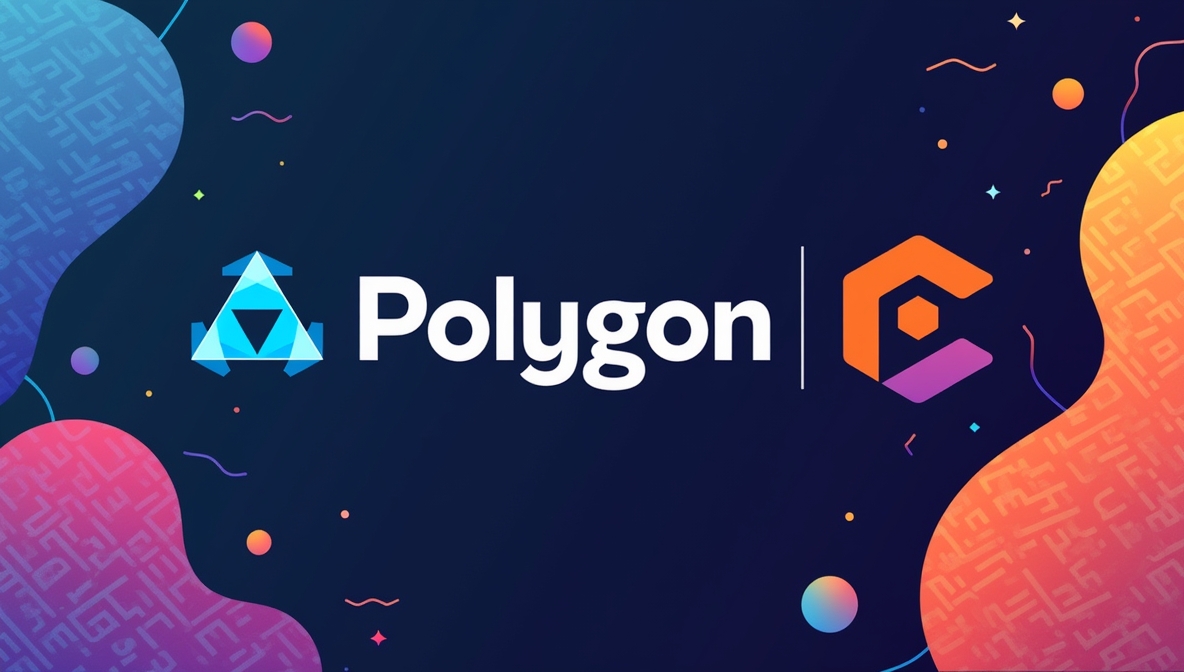Imagine transforming a high-value asset like a skyscraper or a priceless piece of art into digital tokens that can be bought, sold, and traded with ease. Tokenization and Asset Financing are making this vision a reality, fundamentally altering the landscape of financial services. This groundbreaking approach leverages blockchain technology to convert real-world assets into digital tokens, democratizing access to investments and enhancing liquidity like never before.
In today’s fast-paced financial world, traditional asset financing methods often come with high barriers to entry, limited liquidity, and significant reliance on intermediaries. However, tokenization is disrupting these norms by offering a more accessible, efficient, and transparent way to manage and finance assets. This comprehensive guide delves into the intricacies of tokenization and asset financing, exploring its benefits, applications, challenges, and future trends. Whether you’re an investor seeking new opportunities or a financial institution aiming to innovate, understanding tokenization is crucial for staying ahead in the evolving market.
As the financial industry continues to evolve, tokenization stands out as a transformative force, reshaping how assets are managed, financed, and invested.
What is Tokenization in Asset Financing?
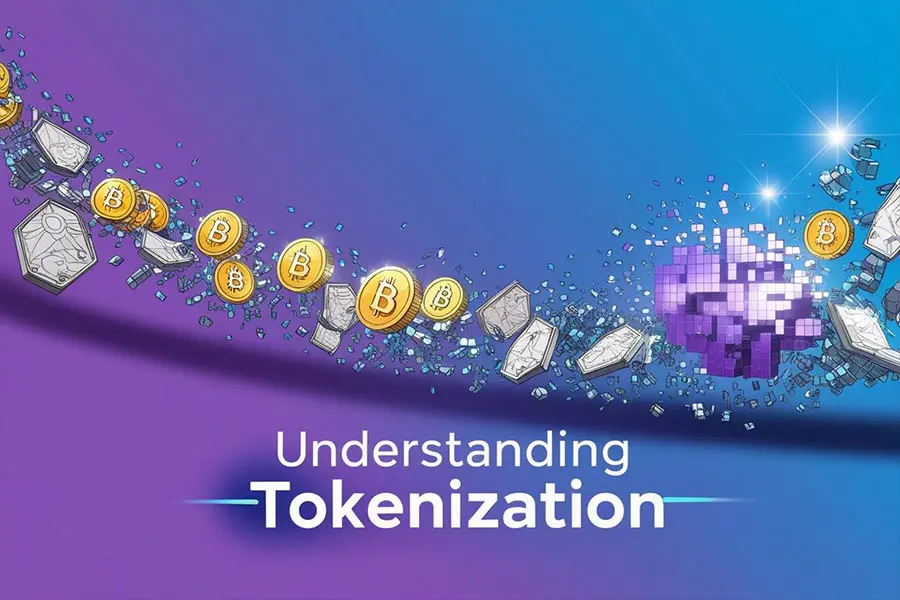
Definition and Process
Tokenization and Asset Financing refers to the process of converting physical or non-physical assets into digital tokens on a blockchain. Each token represents a fractional ownership or a share of the underlying asset, allowing investors to buy, sell, and trade these tokens seamlessly. This digital transformation leverages blockchain’s decentralized and immutable ledger, ensuring transparency, security, and efficiency in asset transactions.
The tokenization process involves several key steps:
- Asset Identification: Selecting the asset to be tokenized, such as real estate, art, or commodities.
- Valuation: Determining the asset’s market value to establish the token’s worth.
- Token Creation: Developing digital tokens on a blockchain platform, each representing a specific portion of the asset.
- Regulatory Compliance: Ensuring the tokenization process adheres to relevant securities laws and regulations.
- Distribution: Offering the tokens to investors through various platforms, facilitating easy access and trading.
By digitizing assets, tokenization unlocks new levels of liquidity and accessibility, making previously illiquid assets tradable and investable by a broader audience.
Key Asset Classes for Tokenization
Tokenization is versatile and applicable across a wide range of asset classes, each benefiting uniquely from digital transformation:
- Real Estate: Enables fractional ownership of properties, allowing investors to purchase shares in high-value real estate without the need for significant capital.
- Art and Collectibles: Facilitates investment in expensive artworks and collectibles by dividing ownership into affordable tokens, broadening the investor base.
- Precious Metals and Commodities: Allows for the trading of digital shares in assets like gold, silver, and oil, enhancing liquidity and accessibility.
- Intellectual Property: Tokenizes patents, royalties, and other intellectual property rights, providing a new avenue for investors to participate in innovation-driven assets.
- Venture Capital and Private Equity: Streamlines investment in startups and private companies by tokenizing equity, making it easier to raise capital and distribute ownership stakes.
- Financial Instruments: Includes tokenized stocks, bonds, and other financial derivatives, offering more flexible investment opportunities.
By unlocking value in these traditionally illiquid assets, tokenization opens doors to new investment opportunities and diversifies portfolios.
Benefits of Tokenization in Asset Financing
Tokenization offers a multitude of advantages that enhance traditional asset financing methods, driving efficiency, accessibility, and growth in the financial sector.
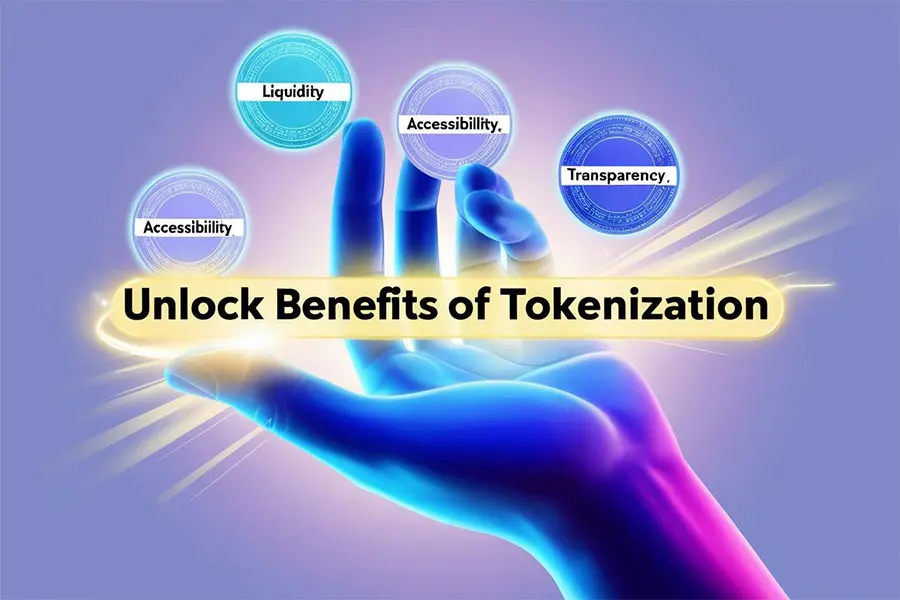
1. Enhanced Liquidity
One of the most significant benefits of Tokenization and Asset Financing is enhanced liquidity. By dividing assets into smaller, tradable tokens, investors can buy and sell fractions of high-value assets without needing to purchase the entire asset. This fractional ownership model transforms otherwise illiquid markets into dynamic and accessible investment opportunities.
- Increased Market Participation: Lower investment thresholds attract a wider range of investors, from individuals to institutions.
- Faster Transactions: Digital tokens can be transferred instantly across global markets, reducing the time it takes to liquidate assets.
- Broader Trading Platforms: Tokenized assets can be listed on various digital exchanges, expanding the market reach and trading volume.
“Tokenization significantly improves liquidity by allowing assets to be divided into smaller, more manageable units,” says Jane Doe, a blockchain expert at FinTech Innovations.
2. Increased Accessibility
Asset Tokenization in Financial Services breaks down barriers to entry, making it easier for investors to access high-value asset classes. Traditionally, investing in real estate or fine art required substantial capital and often excluded smaller investors. Tokenization democratizes these investments by allowing smaller, more affordable entry points.
- Lower Investment Minimums: Investors can purchase tokens corresponding to small fractions of an asset, lowering the financial barrier.
- Global Reach: Digital tokens can be accessed by investors worldwide, broadening the pool of potential buyers and sellers.
- Diverse Investment Options: Investors can easily diversify their portfolios by investing in multiple tokenized assets across different sectors.
This increased accessibility not only broadens the investor base but also fosters a more inclusive financial ecosystem.
3. Transparency and Security
Blockchain technology underpins tokenization, providing an immutable and transparent ledger of all transactions. This transparency ensures that ownership records are accurate and tamper-proof, fostering trust among investors and reducing the risk of fraud.
- Immutable Records: Every transaction is recorded on the blockchain, preventing alterations and ensuring data integrity.
- Enhanced Security: Cryptographic techniques protect digital tokens from unauthorized access and cyber threats.
- Clear Ownership Trails: Investors can easily verify the history and provenance of tokenized assets, enhancing due diligence and compliance.
“Blockchain ensures that every transaction is transparent and secure, which is crucial for building investor trust,” explains John Smith, CEO of CryptoAssets.
4. Operational Efficiency
Tokenization streamlines asset financing by automating processes through smart contracts, which are self-executing contracts with predefined rules. This automation reduces the need for intermediaries, lowering transaction costs and accelerating processing times.
- Reduced Intermediaries: Smart contracts eliminate the need for brokers, banks, and other middlemen, cutting down on fees and delays.
- Automated Compliance: Regulatory requirements can be encoded into smart contracts, ensuring adherence to laws without manual intervention.
- Faster Settlements: Digital transactions settle in real-time, improving cash flow and reducing the time between investment and returns.
These operational efficiencies not only reduce costs but also enhance the overall investment experience for stakeholders.
Read More: Asset Tokenization Trends: Transforming the Financial Landscape
Challenges and Risks in Tokenized Asset Financing
While tokenization offers numerous advantages, it also presents several challenges and risks that stakeholders must address to ensure its successful implementation and sustainability.
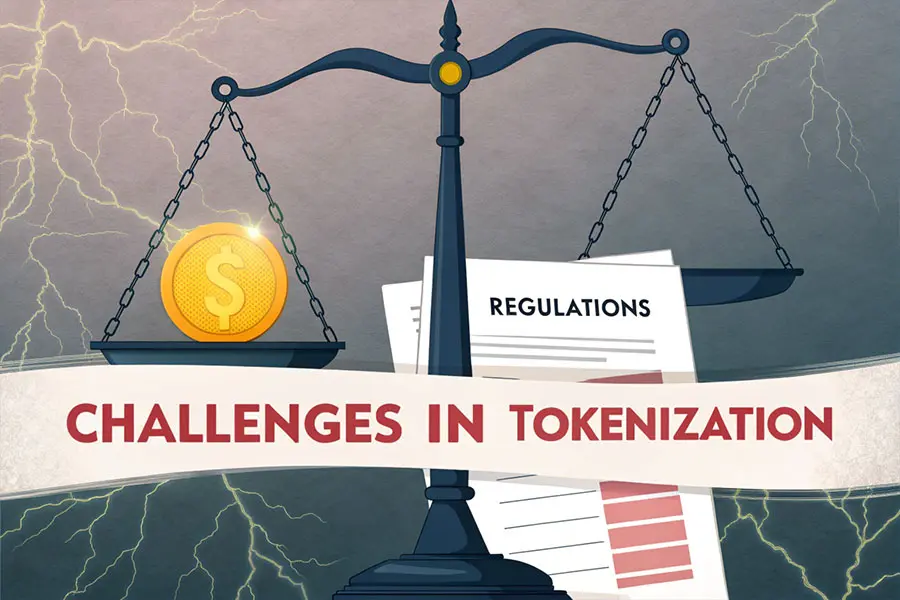
Regulatory Compliance and Legal Risks
Navigating the complex regulatory landscape is one of the primary challenges in Tokenization and Asset Financing. Tokenized assets often fall under securities laws, which vary significantly across jurisdictions. Ensuring compliance with these regulations is critical to avoid legal repercussions and gain investor trust.
- Securities Regulations: Different countries have specific laws governing the issuance and trading of securities, which tokenized assets may qualify as.
- In the United States, the Securities and Exchange Commission (SEC) regulates tokenized assets that fall under the definition of securities.
- In the European Union, the Markets in Crypto-assets (MiCA) regulation aims to create a comprehensive regulatory framework for tokenized assets.
- Anti-Money Laundering (AML) and Know Your Customer (KYC) Requirements: Platforms must implement robust AML and KYC procedures to prevent illicit activities.
- Legal Recognition: The legal status of digital tokens and their enforceability in courts remains uncertain in some regions, posing risks to investors and issuers.
“Regulatory compliance is paramount. Without clear guidelines, tokenized asset financing can face significant legal challenges,” warns Emily Clark, legal advisor at Blockchain Law Associates.
Technology and Security Concerns
While blockchain technology offers robust security features, it is not immune to risks. Technical challenges and cybersecurity threats can undermine the integrity and reliability of tokenized assets.
- Cybersecurity Threats: Tokenized platforms can be targets for hacking, phishing, and other cyberattacks, potentially leading to significant financial losses.
- Scalability Issues: High transaction volumes can strain blockchain networks, leading to slower processing times and increased costs.
- Data Privacy: Public blockchains are transparent, which can raise concerns about the privacy of sensitive information related to asset ownership and transactions.
Ensuring robust security measures and scalable solutions is essential for maintaining the integrity of tokenized asset financing platforms.
Read More: Decentralized Finance (DeFi): Revolutionizing the Future of Finance
Market Adoption Barriers
Adoption of tokenized asset financing faces several market-related obstacles, including skepticism and lack of awareness among investors and financial institutions.
- Investor Skepticism: Many investors are unfamiliar with tokenization and hesitant to adopt new investment models without proven track records.
- Institutional Resistance: Traditional financial institutions may resist integrating tokenization due to existing systems, regulatory uncertainties, and perceived risks.
- Education and Awareness: There is a need for extensive education and awareness campaigns to inform stakeholders about the benefits and mechanisms of tokenization.
Overcoming these adoption barriers requires collaboration, education, and demonstrable success stories to build confidence in tokenized asset financing.
Comparative Analysis with Traditional Financing
To understand the full impact of tokenization, it’s essential to compare it with traditional asset financing methods.
| Aspect | Traditional Asset Financing | Tokenization and Asset Financing |
| Liquidity | Low; selling entire asset is often required. | High; fractional ownership allows easy trading. |
| Accessibility | Limited to high-net-worth individuals or institutions. | Broad; accessible to a wider range of investors. |
| Transparency | Limited; reliant on intermediaries for information. | High; blockchain provides immutable and transparent records. |
| Operational Efficiency | Low; involves multiple intermediaries and longer processes. | High; smart contracts automate processes, reducing intermediaries. |
| Cost | High; due to fees from intermediaries and processes. | Lower; reduced need for intermediaries lowers costs. |
| Speed of Transactions | Slow; can take days or weeks to settle. | Fast; transactions settle in real-time or within minutes. |
| Global Reach | Restricted; often limited by local regulations and infrastructure. | Global; digital tokens can be traded worldwide seamlessly. |
| Regulatory Flexibility | Rigid; hard to adapt to new financial instruments. | Flexible; can quickly integrate new compliance protocols via smart contracts. |
Applications of Tokenization in Asset Financing
Tokenization is transforming various sectors by introducing innovative ways to manage and finance assets. Below are some key applications where tokenization is making a significant impact.
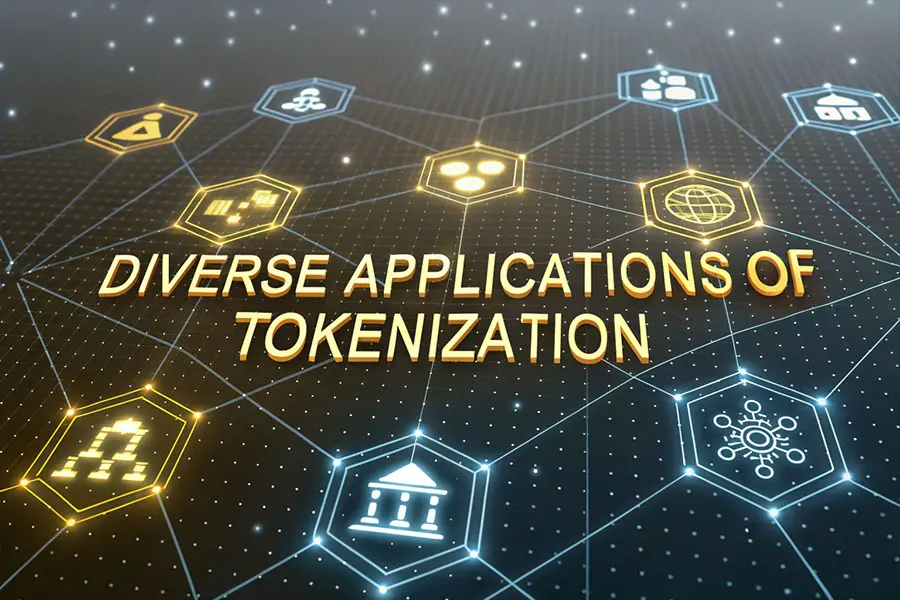
1. Real Estate Tokenization
Real Estate Tokenization in Financial Services is revolutionizing property investment by enabling fractional ownership of real estate assets. This approach allows investors to purchase shares in a property, reducing the financial barrier to entry and increasing liquidity in the real estate market.
- Fractional Ownership: Investors can buy tokens representing a percentage of a property, enabling diversification across multiple properties without significant capital.
- Global Investment Opportunities: Tokenized real estate can attract international investors, expanding the market and increasing capital inflows.
- Enhanced Liquidity: Traditional real estate investments are typically long-term and illiquid. Tokenization allows for easier buying and selling of property shares, providing greater flexibility for investors.
- Case Study: Aspen Digital
Aspen Digital successfully tokenized a luxury hotel, allowing investors to purchase fractional shares through digital tokens. This project showcased how real estate tokenization can democratize property investment by lowering the entry barrier and enhancing liquidity.
“Real estate tokenization democratizes access to property investments, making it possible for anyone to invest in prime real estate markets,” states Michael Lee, CEO of RealEstateToken.
2. Commodities and Precious Metals
Tokenizing commodities like gold, silver, and oil provides investors with a more accessible and liquid way to invest in these traditional assets. Digital tokens representing ownership in physical commodities can be traded on blockchain platforms, offering several advantages over conventional investment methods.
- Ease of Access: Investors can purchase tokens corresponding to small fractions of valuable commodities, lowering the investment threshold.
- Diversification: Tokenization allows for easy diversification within the commodities sector, enabling investors to spread their risk across different assets.
- Transparent Pricing: Blockchain ensures that commodity token prices are transparent and reflective of real-time market values, enhancing trust and accuracy.
- Example: GoldToken
GoldToken provides digital tokens backed by physical gold reserves. With Gold Tokenization, investors can trade these tokens on digital exchanges, gaining the benefits of gold investment without the hassle of physical storage.
“Tokenized commodities provide a flexible and secure way to invest in precious metals, appealing to both traditional and modern investors,” explains Sarah Thompson, Head of Commodities at TokenMarkets.
3. Art and Luxury Collectibles
Tokenization and Asset Management Solutions are opening new avenues for investment in art and luxury collectibles. High-value assets like fine art, rare wines, and luxury watches can be tokenized, making them accessible to a broader range of investors.
- Fractional Investment: Investors can own a piece of expensive artworks or collectibles without needing to purchase the entire asset.
- Market Expansion: Tokenization creates liquid markets for art and collectibles, allowing for easier trading and investment.
- Provenance and Authenticity: Blockchain technology ensures the authenticity and provenance of tokenized art and collectibles, reducing the risk of fraud and enhancing value.
- Case Study: Maecenas
Maecenas is a pioneering platform in the art tokenization space, enabling fractional ownership of high-value artworks. By tokenizing pieces from renowned artists like Andy Warhol, Maecenas created a liquid marketplace for art investments.
“Art tokenization not only preserves the integrity and authenticity of artworks but also opens up new investment opportunities for art enthusiasts,” notes Laura Kim, Chief Curator at ArtToken.
4. Venture Capital and Corporate Bonds
Tokenization is transforming venture capital and corporate bond financing by streamlining the investment process and enhancing transparency. Tokenized bonds and equity stakes provide a more efficient and accessible way for companies to raise capital.
- Simplified Fundraising: Startups and established companies can issue tokens representing equity or debt, simplifying the fundraising process.
- Greater Transparency: Blockchain provides a clear and immutable record of all transactions, enhancing investor confidence and trust.
- Liquidity for Investors: Tokenized bonds and equities can be traded on digital platforms, providing investors with greater liquidity and flexibility.
- Example: Santander’s Tokenized Bonds
Santander Bank issued tokenized corporate bonds, demonstrating the efficiency and transparency benefits of tokenization in debt financing. This initiative, as part of Tokenization in Banking, streamlined the bond issuance process and provided investors with greater access and flexibility.
“Tokenized corporate bonds offer a modern, efficient alternative to traditional debt financing, benefiting both issuers and investors,” explains Carlos Mendes, CFO at Santander Bank.
5. Intellectual Property and Royalties
Tokenization extends to intellectual property (IP) and royalties, providing a new avenue for monetizing creative and innovative assets. By tokenizing patents, copyrights, and royalties, creators and inventors can access a broader investor base and secure funding more efficiently.
- Monetizing IP: Inventors can tokenize their patents, allowing investors to buy shares in their intellectual property and receive royalties based on usage or licensing agreements.
- Enhanced Liquidity: IP tokens can be traded on digital platforms, providing liquidity to what is typically an illiquid asset class.
- Collaborative Funding: Tokenization facilitates collaborative funding for creative projects, enabling multiple investors to contribute to and benefit from the success of a single IP asset.
- Case Study: IPChain
IPChain tokenizes patents and intellectual property, allowing inventors to secure funding by selling fractional ownership through digital tokens. This platform has successfully raised capital for several groundbreaking technologies.
“Tokenizing intellectual property creates new opportunities for innovation by providing creators with accessible funding options,” states Dr. Alice Nguyen, CTO of IPChain.
6. Financial Instruments
Tokenization extends to various financial instruments, including tokenized stocks, bonds, and other derivatives, offering more flexible and diversified investment opportunities.
- Tokenized Stocks: Digital tokens representing shares of publicly traded companies, allowing investors to buy and sell stocks with blockchain efficiency.
- Tokenized Bonds: Bonds issued as digital tokens, providing transparency and ease of trading.
- Tokenized Derivatives: Complex financial instruments like options and futures can be tokenized, enhancing their accessibility and tradability.
- Example: StockToken
StockToken offers digital tokens that mirror the performance of traditional stocks, allowing investors to trade them on blockchain platforms with lower fees and faster settlements.
“Tokenized financial instruments bridge the gap between traditional finance and the digital economy, offering enhanced flexibility and efficiency,” explains David Lee, Head of Innovation at StockToken.
These diverse applications demonstrate the versatility of tokenization in enhancing asset financing across various industries.
Read More: Revolutionizing Finance: Asset Tokenization and Leasing
Industry Case Studies
Examining real-world implementations of tokenization in asset financing provides valuable insights into its practical benefits and challenges. Below are some notable case studies illustrating the transformative power of tokenization.
Real Estate Tokenization: Aspen Digital
Aspen Digital successfully tokenized a luxury hotel, allowing investors to purchase fractional shares through digital tokens. This project showcased how real estate tokenization can democratize property investment by lowering the entry barrier and enhancing liquidity.
- Fractional Ownership: Investors could buy tokens representing shares of the hotel, enabling them to benefit from rental income and property appreciation.
- Increased Liquidity: The tokenized shares could be traded on digital exchanges, providing investors with the ability to liquidate their investments more easily compared to traditional real estate markets.
- Enhanced Transparency: Blockchain ensured transparent and secure ownership records, reducing the risk of fraud and increasing investor trust.
- Quantitative Results: The project raised $5 million in capital through token sales, with a 20% annual ROI projected based on hotel occupancy and revenue growth.
“Aspen Digital’s tokenization model proves that real estate can become more accessible and liquid, benefiting both investors and property owners,” comments Mark Stevens, Senior Analyst at RealEstate Insights.
Art Tokenization: Maecenas
Maecenas is a pioneering platform in the art tokenization space, enabling fractional ownership of high-value artworks. By tokenizing pieces from renowned artists like Andy Warhol, Maecenas created a liquid marketplace for art investments.
- Democratized Access: Investors could purchase tokens representing shares in expensive artworks, making art investment accessible to a broader audience.
- Market Liquidity: Tokenization allowed for the easy trading of art shares, providing liquidity in a traditionally illiquid market.
- Provenance and Authenticity: Blockchain technology verified the authenticity and ownership history of each artwork, enhancing the credibility and value of the tokens.
- Quantitative Results: Maecenas facilitated the sale of $10 million worth of art tokens within the first year, with a 15% appreciation rate observed in token values.
“Maecenas demonstrates how tokenization can unlock the art market, making it more transparent and accessible while preserving the value of masterpieces,” says Laura Kim, Chief Curator at ArtToken.
Corporate Bonds: Santander
Santander Bank issued tokenized corporate bonds, demonstrating the efficiency and transparency benefits of tokenization in debt financing. This initiative streamlined the bond issuance process and provided investors with greater access and flexibility.
- Streamlined Issuance: Tokenization reduced the complexity and time required to issue corporate bonds, making the process more efficient.
- Enhanced Transparency: Blockchain provided a clear and immutable record of bond ownership and transactions, increasing investor confidence.
- Lower Costs: By eliminating intermediaries, tokenization reduced the costs associated with bond issuance and trading.
- Quantitative Results: Santander’s tokenized bonds saw a 30% reduction in issuance costs and a 25% increase in investor participation compared to traditional bond offerings.
“Tokenized bonds offer a modern, efficient alternative to traditional debt financing, benefiting both issuers and investors,” explains Carlos Mendes, CFO at Santander Bank.
Emerging Markets Case Study: TokenFin in Africa
TokenFin is a fintech startup focused on tokenizing assets in emerging markets, particularly in Africa. By tokenizing agricultural land and local commodities, TokenFin aims to provide farmers and local businesses with access to global capital.
- Fractional Land Ownership: Farmers can tokenize their land, allowing investors to purchase shares and provide capital for agricultural expansion.
- Local Commodity Tokenization: Tokenizing commodities like cocoa and coffee enables local producers to access global markets and increase their revenue streams.
- Economic Impact: TokenFin’s initiatives have raised $2 million in funding for local farmers, leading to a 15% increase in agricultural productivity and a 10% rise in local employment rates.
- Quantitative Results: Within the first two years, TokenFin facilitated the tokenization of 500 hectares of agricultural land, attracting over 1,000 investors from around the world.
“TokenFin is bridging the gap between local asset holders and global investors, driving economic growth and sustainability in emerging markets,” states Amina Suleiman, Founder and CEO of TokenFin.
These case studies highlight the practical advantages and successful applications of tokenization across different sectors and regions, reinforcing its potential to revolutionize asset financing.
Market Trends and Future of Tokenization in Asset Financing
The tokenization of assets is rapidly gaining traction, driven by technological advancements, regulatory developments, and growing investor interest. Understanding the current market trends and future projections is essential for stakeholders looking to capitalize on this transformative trend.
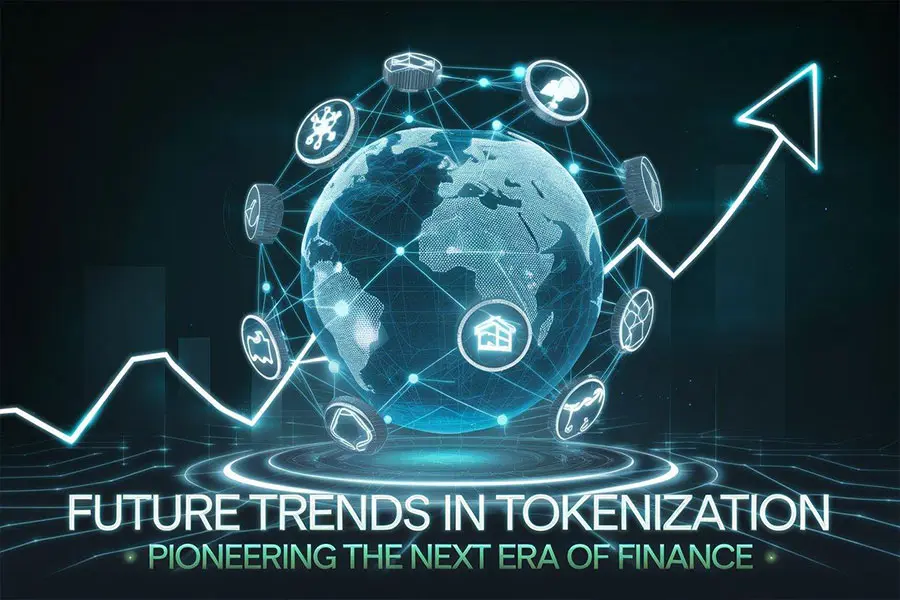
Growth Predictions
The Digital Asset Financing through Tokenization market is experiencing significant growth, with forecasts suggesting substantial expansion in the coming years. Analysts predict that the global tokenization market could reach $16 trillion by 2030, fueled by increasing adoption across various sectors and continuous technological innovations.
- Rising Investment Demand: As investors seek more diversified and accessible investment opportunities, tokenization provides a compelling solution.
- Institutional Adoption: Major financial institutions are exploring tokenization as a way to innovate their asset management and financing services.
- Technological Advancements: Improvements in blockchain technology, interoperability, and scalability are driving the adoption and efficiency of tokenization platforms.
- Global Expansion: Emerging markets are increasingly adopting tokenization to unlock local assets and attract global investment.
“The tokenization market is poised for exponential growth, driven by its ability to democratize access to assets and enhance financial efficiency,” forecasts Dr. Linda Garcia, Market Analyst at Global Finance Research.
Technological Innovations
Ongoing technological advancements are addressing the current limitations of tokenization, paving the way for more seamless and secure asset financing solutions.
- Interoperable Blockchains: Developing cross-chain compatibility enhances the functionality and reach of tokenized assets, allowing for easier transfers and integration across different blockchain networks.
- Zero-Knowledge Proofs: This cryptographic technique improves data privacy by allowing verification of transactions without revealing sensitive information.
- Decentralized Finance (DeFi) Integration: Integrating tokenized assets with DeFi platforms enables new financial products and services, such as lending and staking, further increasing the utility of digital tokens.
- AI and Machine Learning: Leveraging AI for predictive analytics and risk assessment enhances the management and optimization of tokenized asset portfolios.
- Advanced Smart Contracts: Creating more sophisticated smart contracts that can handle complex financial transactions and automated compliance.
Technological innovations are critical for overcoming existing challenges and unlocking the full potential of tokenization in asset financing.
Evolving Regulations
Regulatory frameworks are evolving to address the unique challenges posed by tokenized assets, providing clearer guidelines and fostering a more stable environment for growth.
- Global Regulatory Harmonization: Efforts are underway to harmonize regulations across different jurisdictions, reducing complexities for cross-border tokenized asset transactions.
- Compliance Standards: Developing standardized compliance protocols ensures that tokenized assets adhere to security, AML, and KYC regulations, enhancing investor protection.
- Legal Recognition: Increasing legal recognition of digital tokens and smart contracts is solidifying their status as legitimate financial instruments, encouraging broader adoption.
- Regulatory Sandboxes: Governments and regulatory bodies are establishing sandboxes to allow for experimentation with tokenized assets under controlled conditions, fostering innovation while ensuring compliance.
Clear and consistent regulations are essential for building investor confidence and driving the widespread adoption of tokenized asset financing.
Environmental Impact of Tokenization
As the world increasingly focuses on sustainability, the environmental impact of tokenization is becoming a critical consideration.
- Energy Consumption: Blockchain networks, particularly those using Proof of Work (PoW) consensus mechanisms, consume significant energy. However, the shift towards more energy-efficient mechanisms like Proof of Stake (PoS) is mitigating this issue.
- Sustainable Practices: Tokenization platforms are adopting sustainable practices, such as using renewable energy sources for blockchain operations and implementing carbon offset programs.
- Green Tokenization Projects: Initiatives are emerging to tokenize environmental assets, such as carbon credits and renewable energy certificates, promoting sustainable investment.
“Sustainability is becoming a key focus in tokenization, with efforts to reduce energy consumption and promote green investment opportunities,” notes Dr. Rachel Green, Sustainability Expert at EcoFinance.
Future Innovations
The future of tokenization in asset financing is bright, with several innovations on the horizon that promise to further enhance its capabilities and adoption.
- Layer 2 Solutions: Enhancing blockchain scalability and reducing transaction fees through Layer 2 protocols.
- Enhanced Interoperability: Developing protocols that allow different blockchains to communicate and share data seamlessly.
- AI Integration: Utilizing artificial intelligence to optimize tokenized asset management and investment strategies.
- Advanced Smart Contracts: Creating more sophisticated smart contracts that can handle complex financial transactions and automated compliance.
- Tokenized Insurance: Introducing tokenized insurance products that provide coverage for tokenized assets, adding an extra layer of security for investors.
These future innovations will continue to drive the growth and sophistication of tokenization in asset financing, making it an integral part of the global financial ecosystem.
Expert Strategies for Maximizing Tokenization Opportunities
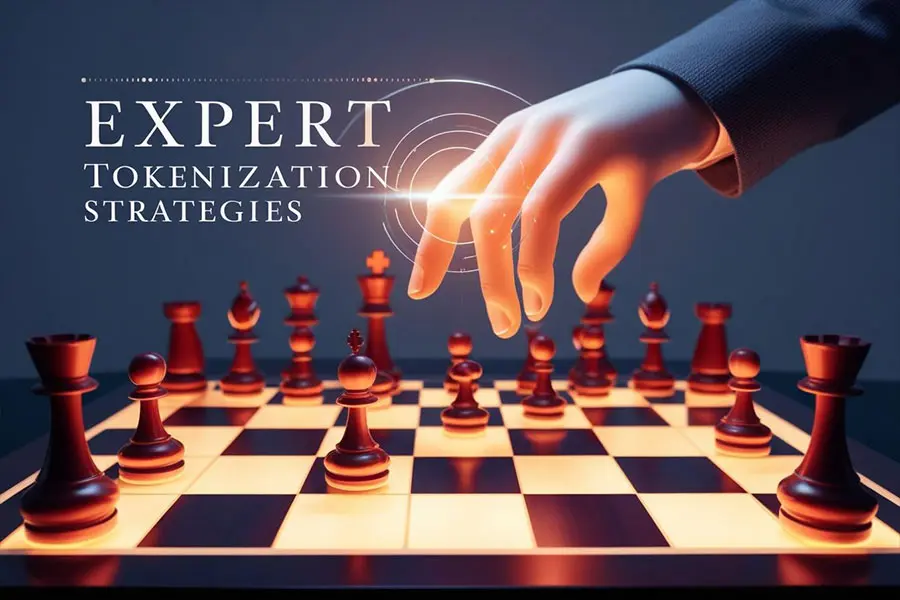
To fully harness the potential of Tokenization and Asset Financing, it’s essential to adopt strategic approaches that address challenges and capitalize on the benefits of tokenization. Here are some expert strategies to maximize tokenization opportunities:
1. Start Small
Begin with low-risk assets to familiarize yourself with the tokenization process and market dynamics. This approach allows you to gain practical experience and mitigate potential risks before scaling up to more significant investments.
- Pilot Projects: Launch small-scale tokenization projects to test the waters and refine your strategies.
- Risk Management: Assess and manage risks associated with tokenization, including market volatility and regulatory compliance.
- Incremental Scaling: Gradually increase the size and complexity of your tokenization initiatives as you gain confidence and expertise.
“Starting small allows you to understand the nuances of tokenization without exposing yourself to significant risks,” advises Dr. Emily Watson, Head of Blockchain Strategy at FinTech Labs.
2. Stay Informed
Keep abreast of the latest developments in blockchain technology, regulatory changes, and market trends. Continuous learning ensures that you remain competitive and can adapt to the evolving landscape of asset financing.
- Industry News: Follow reputable sources and industry publications to stay updated on tokenization trends.
- Educational Resources: Invest in training and education to deepen your understanding of blockchain and tokenization technologies.
- Networking: Participate in industry conferences, webinars, and forums to exchange ideas and stay connected with experts.
“Staying informed is crucial in a rapidly evolving field like tokenization. It enables you to anticipate changes and leverage new opportunities,” states Michael Johnson, Blockchain Analyst at CryptoWorld.
3. Leverage Expertise
Collaborate with tokenization advisory services like Tokenova to gain strategic guidance and technical support. Expert partners can help navigate the complexities of tokenization, from regulatory compliance to technical implementation.
- Advisory Services: Engage with professionals who specialize in tokenization to receive tailored advice and solutions.
- Technical Support: Utilize the expertise of blockchain developers and legal advisors to ensure a smooth tokenization process.
- Strategic Partnerships: Form partnerships with established tokenization platforms and financial institutions to enhance your offerings and reach.
“Partnering with experts ensures that your tokenization projects are well-executed and compliant with all necessary regulations,” explains Sophia Martinez, CEO of Tokenova.
4. Focus on Compliance
Ensure that your tokenization projects adhere to all relevant regulations and standards. Compliance not only avoids legal pitfalls but also builds trust with investors and stakeholders.
- Regulatory Research: Conduct thorough research on the regulatory requirements in your target markets.
- Compliance Tools: Implement robust compliance tools and processes to automate and streamline adherence to laws and regulations.
- Legal Consultation: Regularly consult with legal experts to stay updated on regulatory changes and ensure ongoing compliance.
“Compliance is non-negotiable in tokenization. It protects your business and ensures long-term sustainability,” advises Laura Brown, Legal Counsel at Blockchain Compliance Solutions.
5. Enhance Security Measures
Prioritize the security of your tokenized assets by implementing advanced cybersecurity protocols and regular security audits. Protecting digital tokens from cyber threats is paramount to maintaining investor confidence and safeguarding your assets.
- Cybersecurity Frameworks: Adopt comprehensive cybersecurity frameworks to protect your tokenized assets.
- Regular Audits: Conduct periodic security audits to identify and address vulnerabilities in your tokenization platform.
- Secure Storage Solutions: Utilize secure digital wallets and storage solutions to safeguard tokens and private keys.
“Security is the foundation of trust in tokenization. Robust security measures are essential for protecting assets and maintaining investor confidence,” states David Liu, Chief Security Officer at SecureToken.
6. Optimize User Experience
Provide a seamless and user-friendly experience for investors interacting with your tokenization platform. A positive user experience enhances engagement and encourages repeat investments.
- Intuitive Interface: Design a user-friendly interface that simplifies the tokenization process and makes it accessible to all investors.
- Customer Support: Offer robust customer support to assist investors with any issues or questions they may have.
- Educational Materials: Provide comprehensive educational resources to help investors understand tokenization and make informed decisions.
“A seamless user experience is crucial for attracting and retaining investors. It ensures that users can navigate the platform effortlessly and feel confident in their investments,” explains Anna White, UX Designer at TokenEase.
7. Diversify Tokenized Assets
Diversify the range of assets you tokenize to spread risk and appeal to a broader investor base. Offering a variety of tokenized assets caters to different investment preferences and strategies.
- Multiple Asset Classes: Tokenize assets across various classes, such as real estate, art, commodities, and intellectual property.
- Geographical Diversity: Tokenize assets from different regions to attract a global investor base and mitigate regional risks.
- Sector Diversification: Include assets from diverse sectors like technology, healthcare, and energy to enhance portfolio resilience.
“Diversification is key to mitigating risk and attracting a wider range of investors. It allows you to offer tailored investment opportunities that meet different needs,” advises James Turner, Portfolio Manager at DiverseAssets.
8. Implement Advanced Analytics
Utilize advanced analytics and data-driven insights to optimize your tokenization strategy and enhance investment performance.
- Performance Tracking: Monitor the performance of tokenized assets in real-time to make informed investment decisions.
- Predictive Analytics: Use predictive analytics to forecast market trends and identify emerging opportunities in the tokenization space.
- Investor Insights: Analyze investor behavior and preferences to tailor your offerings and improve engagement.
“Advanced analytics provide valuable insights that can drive strategic decisions and improve the overall performance of tokenized asset portfolios,” states Dr. Karen Lee, Data Scientist at TokenAnalytics.
By following these expert strategies, you can effectively navigate the tokenization landscape and maximize the benefits of asset financing through digital transformation.
Tokenova: Your Strategic Partner in Tokenization and Asset Financing
Transforming Your Vision into Reality
At Tokenova, we specialize in consulting businesses, financial institutions, and investors on leveraging the revolutionary power of tokenization. With expertise in blockchain technology, regulatory compliance, and innovative asset management, we provide tailored strategies to help you stay ahead in the evolving financial landscape.
Our Consulting Services
- Tokenization Strategy Development
- Assess your assets and create customized roadmaps for tokenization.
- Identify key opportunities in real estate, art, commodities, intellectual property, and more.
- Regulatory Compliance and Risk Management
- Navigate complex global regulations with confidence.
- Ensure compliance with AML, KYC, and securities laws for seamless operations.
- Technology Implementation
- Integrate blockchain technology for efficient and secure tokenization.
- Leverage smart contracts to automate processes and reduce costs.
- Market Entry and Adoption Planning
- Strategize for market adoption and global outreach.
- Build investor confidence with clear value propositions and transparent processes.
- Liquidity Optimization
- Unlock asset value by enhancing liquidity through fractional ownership.
- Access global investment pools to maximize asset potential.
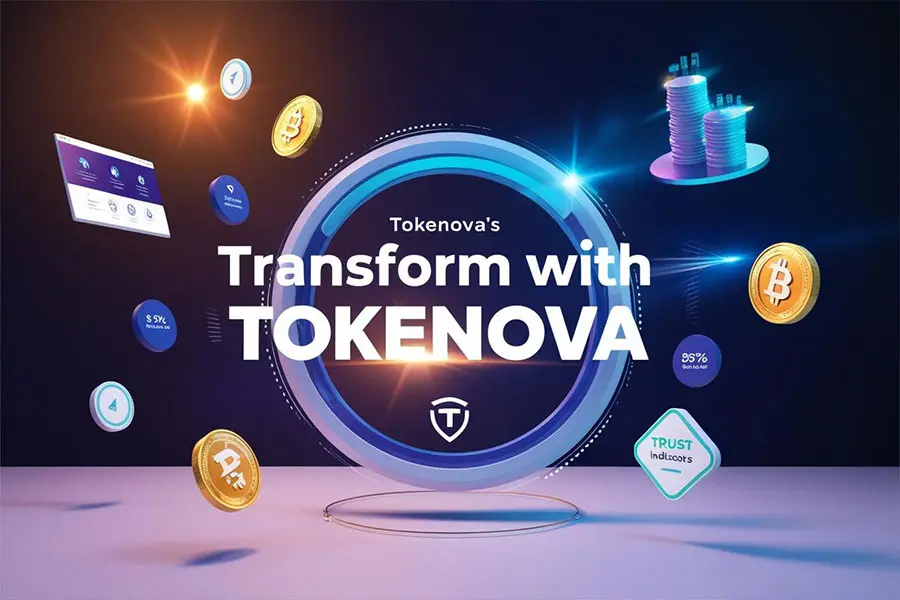
Why Partner with Tokenova?
- Expertise You Can Trust
A team of blockchain specialists, legal experts, and financial strategists dedicated to your success. - End-to-End Solutions
From concept to execution, we manage every aspect of your tokenization journey. - Global Insights
Deep understanding of global markets and regulations to help you thrive in any region. - Proven Results
Empowering businesses and investors to unlock new growth opportunities through tokenization.
Let’s Build the Future Together
Transform your assets, elevate your strategies, and redefine your financial operations with Tokenova. Partner with us to unlock a world of possibilities in the tokenized economy.
Conclusion
Tokenization and Asset Financing are ushering in a new era of financial innovation, transforming how assets are managed, financed, and invested. By converting real-world assets into digital tokens, tokenization democratizes access to high-value investments, enhances liquidity, and streamlines operations through blockchain technology. The benefits ranging from increased accessibility and transparency to operational efficiency are reshaping traditional financial models and opening up unprecedented opportunities for investors and institutions alike.
However, the journey towards widespread adoption is not without challenges. Regulatory compliance, technological security, and market adoption barriers must be navigated with strategic planning and expert guidance. As technological advancements continue and regulatory frameworks evolve, the future of tokenization in asset financing looks promising, poised to revolutionize the financial landscape further.
Embracing tokenization now positions financial institutions and investors at the forefront of this transformative trend, unlocking new potentials and driving growth in an increasingly digital economy.
Key Takeaways
- Tokenization Defined: The conversion of real-world assets into digital tokens on a blockchain, enabling fractional ownership and enhanced liquidity.
- Fractional ownership allows investors to buy smaller shares of high-value assets, making investments more accessible.
- Diverse Applications: Tokenization is applicable across various asset classes, including real estate, art, commodities, and intellectual property.
- Each asset class benefits uniquely from tokenization, from increasing liquidity in real estate to democratizing art investments.
- Significant Benefits: Key advantages include increased liquidity, accessibility, transparency, and operational efficiency in asset financing.
- These benefits make tokenization a compelling alternative to traditional asset financing methods.
- Challenges to Address: Regulatory compliance, technological security, and market adoption barriers are critical challenges that need strategic solutions.
- Navigating these challenges is essential for the successful implementation and sustainability of tokenized asset financing.
- Future Growth: Technological innovations and evolving regulations are set to drive the continued growth and adoption of tokenization in asset financing.
- Future advancements will further enhance the capabilities and appeal of tokenization, fostering broader acceptance and integration.
These key takeaways highlight the transformative potential of tokenization in asset financing, emphasizing its benefits, applications, and the strategic approaches needed to overcome challenges.
How Does Tokenization Impact Traditional Banking?
Tokenization is significantly altering the role of traditional banks by introducing more efficient, transparent, and accessible methods of asset financing. By digitizing assets, banks can offer new investment products, streamline operations, and reduce costs associated with intermediaries. This shift not only enhances the customer experience but also opens up new revenue streams for financial institutions willing to embrace blockchain technology.
New Investment Products: Banks can offer tokenized versions of traditional investment products, such as real estate funds or art investment portfolios.
Operational Streamlining: Automation through smart contracts reduces the need for manual processes, speeding up transactions and reducing errors.
Cost Reduction: Eliminating intermediaries and automating compliance tasks lowers operational costs, allowing banks to offer more competitive rates and fees.
“Tokenization allows banks to innovate and offer more flexible, efficient, and cost-effective financial products to their customers,” explains Robert Anderson, Head of Digital Banking at Global Bank.
Can Tokenized Assets Be Integrated with Existing Investment Portfolios?
Yes, tokenized assets can be seamlessly integrated into existing investment portfolios, providing diversification and new opportunities for growth. Investors can allocate portions of their portfolio to tokenized real estate, art, or commodities, balancing traditional investments with digital assets. This integration enhances portfolio resilience and offers exposure to innovative asset classes previously inaccessible to smaller investors.
Portfolio Diversification: Adding tokenized assets reduces portfolio risk by spreading investments across different asset classes and sectors.
Enhanced Returns: Tokenized assets often provide higher liquidity and potential for appreciation, contributing to overall portfolio performance.
Ease of Management: Digital platforms allow for easy monitoring and rebalancing of tokenized assets within a portfolio.
“Integrating tokenized assets into existing portfolios not only diversifies investments but also leverages the benefits of blockchain technology for enhanced returns and liquidity,” states Linda Martinez, Investment Advisor at WealthManagement Co.
What Role Do Smart Contracts Play in Tokenized Asset Financing?
Smart contracts are pivotal in Tokenization and Asset Management Solutions, automating and enforcing the terms of asset transactions without the need for intermediaries. These self-executing contracts ensure that transactions are carried out precisely as programmed, enhancing security, reducing costs, and increasing efficiency. Smart contracts facilitate everything from the issuance and transfer of tokens to compliance with regulatory requirements, making them integral to the functionality of tokenized asset financing.
Automated Transactions: Smart contracts execute transactions automatically when predefined conditions are met, eliminating the need for manual intervention.
Regulatory Compliance: Compliance rules can be encoded into smart contracts, ensuring that all transactions adhere to legal requirements without additional oversight.
Reduced Costs: By automating processes, smart contracts lower the costs associated with intermediaries and manual operations.
“Smart contracts are the backbone of tokenized asset financing, providing the automation and security needed to streamline transactions and ensure compliance,” explains Dr. Henry White, Blockchain Developer at SmartFinance Solutions.



